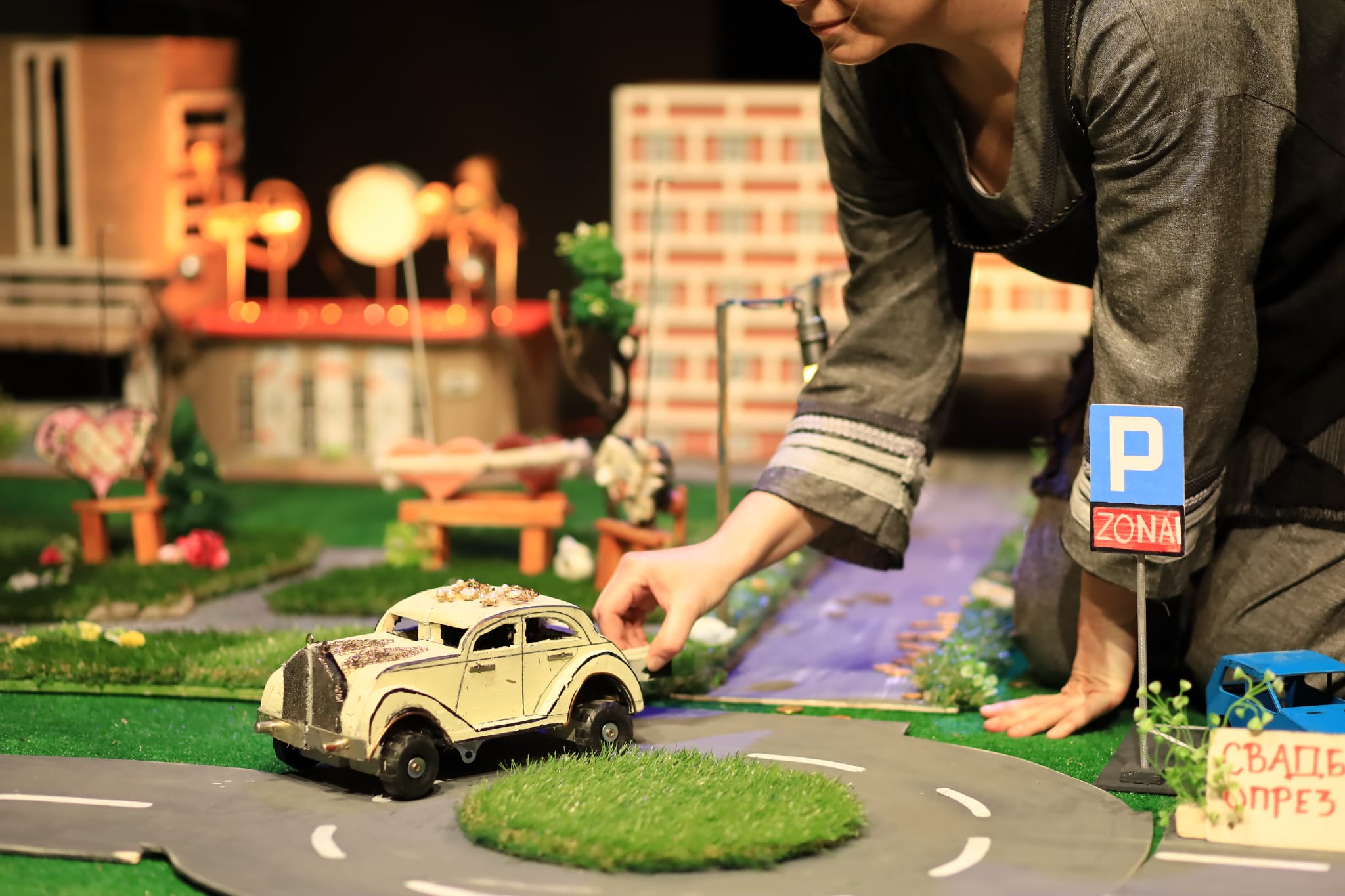The performance "City of Light" by David Zuazola at the Theater for Children and Youth in Kragujevac is a continuation of an international project in which the city, its spirit, history and urban legends are presented through light and lamps. Thus, the story of Kragujevac began with the introduction of electricity and lighting into homes and continued with the lights of discotheques, markets, parks, taxis and ambulances, traffic lights, Arsenal Fest spotlights, lighting at the "Zastava" factory, lights in the sky during the bombing, lights of the souls of those who were shot during the Second World War and the souls of those who lived in the city, were born there, left it and returned to it.
Actor Aleksandar Petković portrays the city of Kragujevac on stage, while we hear his poetic memories from behind the stage. Although he is confined to the small space of the room for the entire performance, one gets the impression that he is walking through the city and bringing to the stage all the scenes he tells about. Actresses Milica Redžić Vulević and Ljubica Radomirović bring the Kragujevac neighborhoods and city events to life extremely skillfully. The scene about Šumarice is particularly emotional, and I commend the clearly articulated anti-fascist message that the play expresses with that. While the actress is "building" a monument to shot students and professors, the audience hears the last messages of innocent civilians who were shot by German occupation forces in October 1941.
Emotionally and atmospherically, the play is irresistibly reminiscent of the film "That’s it for today" directed by Marko Đorđević, also set in Kragujevac. Apart from the location, the film and the play do not seem to have much in common, neither in the aesthetic sense, nor in the language and narrative, but in both works the need for community and the authenticity of one city is unobtrusively highlighted, which is universal and easily understandable.
During the conversation after the performance, the actors revealed part of the process of working on the play. They made all the models of the buildings and areas of Kragujevac together with the designer Alina Linkova. That's how some of the actors, as they jokingly say, discovered a talent for drilling, sawing, and carpentry. The collective spirit, from making the show, taking care of every light source and every part of the scenography, was completely transferred to the performance.




